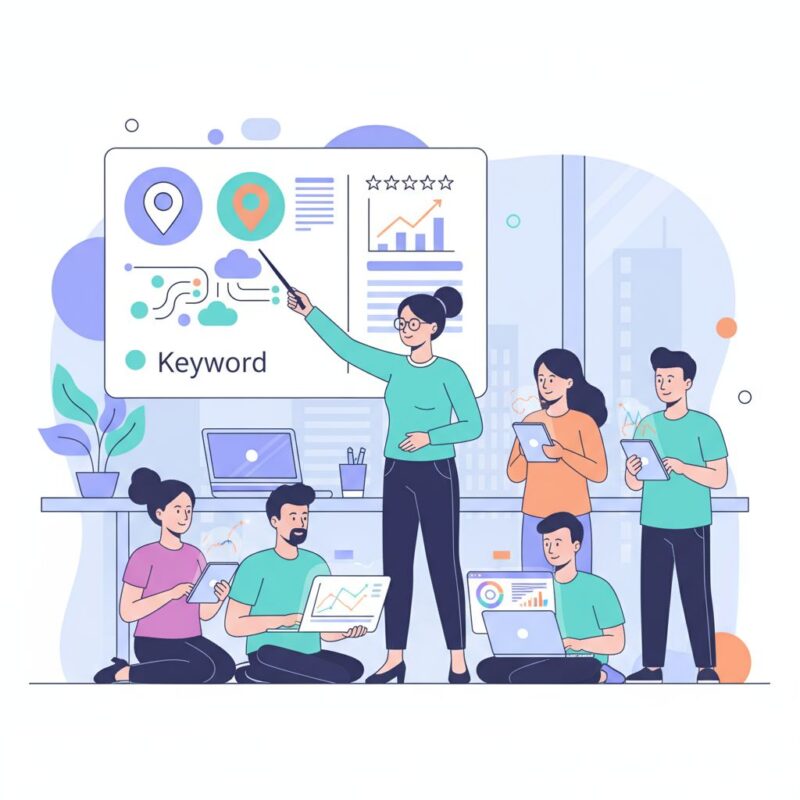
Blog
What is Local SEO Attribution Modeling and Why It Matters

Did you know 52% of marketers now use attribution models to outperform competitors? This approach isn’t just for big brands. Small businesses can use it to pinpoint exactly what drives sales—not just clicks.
Attribution tracks every step a customer takes before converting. It shows how ads, website visits, or emails work together. Traditional analytics might tell you someone clicked a link. Attribution reveals whether that click led to a call, purchase, or walk-in.
For example, a customer might find your bakery through a Google search, return via a social media ad, then visit your store. Without attribution, you’d credit only the last touchpoint. With it, you see the full story—and allocate budgets smarter.
Key Takeaways
- Attribution models track interactions across ads, searches, and content to show what drives real results.
- Over half of marketers rely on attribution to stay ahead in crowded markets.
- It connects strategies like keyword optimization and content quality to actual sales or leads.
- Traditional metrics often miss hidden steps in customer journeys, like repeat visits or offline actions.
- Clear attribution data helps justify marketing spend by linking efforts to revenue.
Introduction to Local SEO Attribution Modeling
Businesses today face complex customer paths that require detailed analysis. Customers might check your Google listing, read reviews, then visit your store days later. Tracking these steps helps you see what truly drives decisions.
Defining the Framework
This approach maps every step someone takes before buying. Unlike basic conversion tracking, it shows how each action—like clicking a map link or calling your store—contributes to results. For example, a customer might:
- Search for “coffee shops near me”
- Click your website from Google Maps
- Call to ask about vegan options
Traditional metrics might credit only the call. Attribution reveals the full story.
Why It Matters for Growth
B2B buyers interact with brands 36 times before converting. Local shoppers behave similarly, blending online research with in-store visits. Without proper tracking, you might fund the wrong strategies.
| Touchpoint | Interaction Type | Impact Level |
|---|---|---|
| Google My Business | Direction requests | High |
| Local directories | Profile views | Medium |
| Website visits | Page engagement | High |
| Phone calls | Inquiry duration | Critical |
This data helps prioritize efforts. If most sales start with map searches, focus on optimizing listings. If calls drive conversions, improve phone support. Clear insights mean smarter budgets.
Key Attribution Models in Local SEO attribution modeling
How do you track which marketing efforts actually drive sales? Different methods assign value to customer interactions in unique ways. Each approach reveals hidden patterns in how people discover and choose your business.
First-Touch, Last-Touch, and Hybrid Models Explained
First-touch models give full credit to the initial interaction. Imagine someone finds your café through a “best brunch spots” search. This method highlights what sparks initial interest, like blog posts or directory listings.
Last-touch models focus on the final step before a sale. If that same customer later clicks a Google Ads promo to visit, you’d credit the ad. It’s useful for measuring closing tactics like limited-time offers.
Hybrid models blend both approaches. For example:
- 40% credit to first touchpoint
- 60% to last interaction
This flexibility works for businesses with longer decision cycles, like home services.
Linear and Time-Decay Methods Overview
Linear models split credit evenly across all interactions. A customer might:
- Search for “HVAC repair”
- Read your service page
- Call after seeing a review
Each step gets equal value. It’s ideal for understanding team efforts in multi-channel campaigns.
Time-decay models prioritize recent interactions. A customer researching “dentists near me” for weeks gets more credit from last week’s email reminder than their initial search. Use this for products with long consideration phases, like mattresses or cars.
Implementing Attribution Modeling Tools and Analytics
Your phone just rang with a new customer—but which marketing effort deserves credit? Modern tools help answer this by connecting online actions to real-world results. Start by configuring platforms to track how customers interact with your business across devices and locations.
Leveraging Google Analytics, HubSpot, and Other Platforms
Google Analytics 4 (GA4) lets you track customer journeys through goals and custom events. Set up triggers for actions like phone calls or map direction requests. Use the Model Comparison Tool to test how different credit分配方法 affect your reported performance.
HubSpot simplifies multi-touch reporting for businesses lacking data teams. Its built-in dashboards show how blog posts, emails, or ads work together to generate leads. Pair this with Google Search Console data to see which keywords drive store visits or form submissions.
| Platform | Key Feature | Best For |
|---|---|---|
| Google Analytics | Conversion path analysis | Multi-channel tracking |
| HubSpot | Lead source attribution | Small business reporting |
| Search Console | Keyword performance | Landing page optimization |
Using Data to Interpret Customer Touchpoints
Create UTM parameters for campaigns to track offline conversions. For example, add unique codes to flyers or social posts. Analyze patterns in GA4’s Engagement tab to see if customers typically visit your site 2-3 times before calling.
Build custom dashboards highlighting metrics like:
- Most common first/last interactions
- Average touchpoints per conversion
- High-value keyword groups
Fix tracking gaps by enabling cross-device reporting in GA4. Test different attribution windows to match your sales cycle—30 days for quick purchases vs. 90 days for considered buys.
Optimizing Your Local SEO Strategy
Many businesses pour resources into content without knowing what truly works. Data-driven insights help you focus on what converts visitors into customers. Start by identifying patterns in how people interact with your materials before taking action.

Enhancing Content and Keyword Strategies
Review which blog posts or service pages lead to phone calls or form submissions. A bakery might discover recipe guides drive more foot traffic than menu pages. Double down on content types that influence real outcomes.
| Content Type | Key Impact | Optimization Action |
|---|---|---|
| Blog Posts | Drives awareness | Include local FAQs in titles |
| Service Pages | Generates leads | Add click-to-call buttons |
| Location Guides | Boosts visits | Embed interactive maps |
| Testimonials | Builds trust | Showcase recent reviews |
Aligning Insights with Business Goals
Connect high-performing keywords to specific objectives. If “emergency plumber near me” brings 80% of calls, prioritize it over general terms. Adjust campaigns weekly based on what drives sales, not just clicks.
Set clear targets like increasing store visits by 15% in three months. Share reports showing how content improvements reduced cost per lead. This proves value and secures ongoing support for your efforts.
Best Practices and Overcoming Challenges
Accurate data acts like a compass for your marketing decisions. Without reliable tracking, you might steer campaigns toward dead ends instead of growth opportunities. Start by implementing these proven methods to maintain clarity across all customer interactions.
Ensuring Data Accuracy and Cross-Channel Integration
Use UTM parameters consistently across ads, social posts, and printed materials. This helps identify which efforts drive calls or store visits. For example, tag flyers with “utm_source=print_flyer” to track offline-to-online conversions.
Regularly audit your analytics setup to catch issues like:
- Missing tracking codes on key pages
- Inconsistent event naming conventions
- Cookie consent mismanagement
Integrate data from multiple platforms using tools like Google Data Studio. Compare search trends with phone call logs to see how digital research leads to real-world purchases.
Continuous Validation and Model Refinement
Test different credit分配方法 monthly. A restaurant might discover email reminders deserve more credit than initial Google searches during holiday seasons. Adjust your model weights accordingly.
| Challenge | Solution | Impact |
|---|---|---|
| Limited conversion data | Expand tracking window to 90 days | +22% touchpoint visibility |
| Cross-device journeys | Implement user-ID tracking | 35% fewer gaps |
| Privacy regulations | Use first-party data pools | Compliance + accuracy |
Establish quarterly reviews to align models with shifting customer habits. Update rules when new channels like TikTok ads or voice search gain traction in your market.
Contact Information and Resources
Ready to transform your digital strategy? Expert guidance helps businesses connect their activities to measurable outcomes. Whether refining campaigns or analyzing customer paths, professional support ensures you invest time and budget wisely.
Direct Consultation Channels
Contact SEO Local at 858-201-7994 or que@seolocal.it.com. Their team specializes in helping businesses:
• Map customer journeys across search and social platforms
• Optimize email campaigns based on real conversion data
• Adjust marketing efforts using performance-driven insights
Detailed reports reveal how specific actions influence sales, from initial searches to final purchases. Schedule a call to discuss tailored solutions for your business goals. Quarterly strategy reviews keep your approach aligned with evolving customer behaviors.
FAQ
How does local SEO attribution modeling differ from traditional attribution models?
Local SEO attribution modeling focuses on tracking how local search interactions—like Google My Business clicks or map views—contribute to conversions. Traditional models often overlook hyperlocal touchpoints, such as foot traffic or “near me” searches, which are critical for businesses targeting specific geographic areas.
Which attribution model works best for businesses with physical locations?
Hybrid models, like combining first-touch and last-touch, often perform well. They credit both the initial discovery (e.g., a local directory listing) and the final action (e.g., an in-store visit). Time-decay models also help prioritize touchpoints closer to the conversion, like a last-minute Google search before a purchase.
Can Google Analytics track offline conversions for local businesses?
Yes. By integrating Google Analytics with tools like call tracking or CRM systems, you can attribute phone calls, in-store visits, or form submissions to specific online interactions. This bridges the gap between digital efforts and real-world outcomes.
How do I align attribution insights with my local SEO strategy?
Use data from platforms like HubSpot or BrightLocal to identify high-performing keywords, landing pages, or channels. For example, if “near me” searches drive foot traffic, optimize your Google Business Profile and create location-specific content to reinforce those touchpoints.
What’s the biggest challenge in implementing attribution modeling for local SEO?
Data fragmentation is common. Interactions like phone calls, reviews, and social media mentions often occur across separate platforms. Tools like CallRail or Uberall can unify this data, providing a clearer view of the customer journey.
How often should I update my attribution model?
Review it quarterly. Customer behavior shifts seasonally—holiday shopping spikes, for instance—and your model should reflect these trends. Regular A/B testing of landing pages or ad campaigns also ensures your strategy stays aligned with current patterns.
Where can I get help setting up a local SEO attribution strategy?
Contact SEO Local at 858-201-7994 or que@seolocal.it.com. Their team specializes in tailoring attribution frameworks for businesses targeting local audiences, ensuring your marketing efforts drive measurable results.













